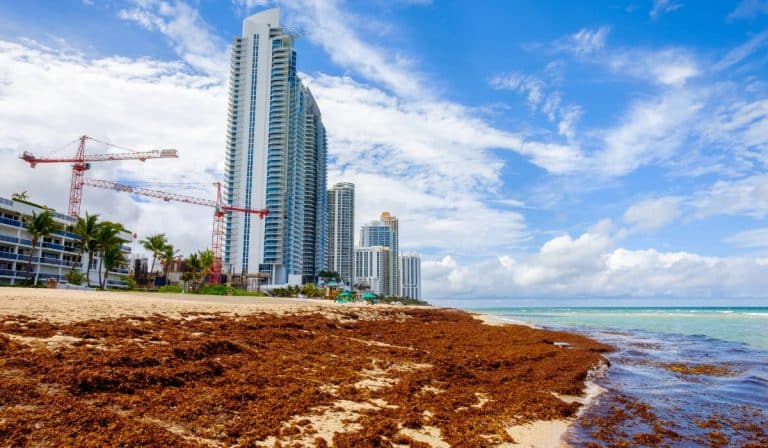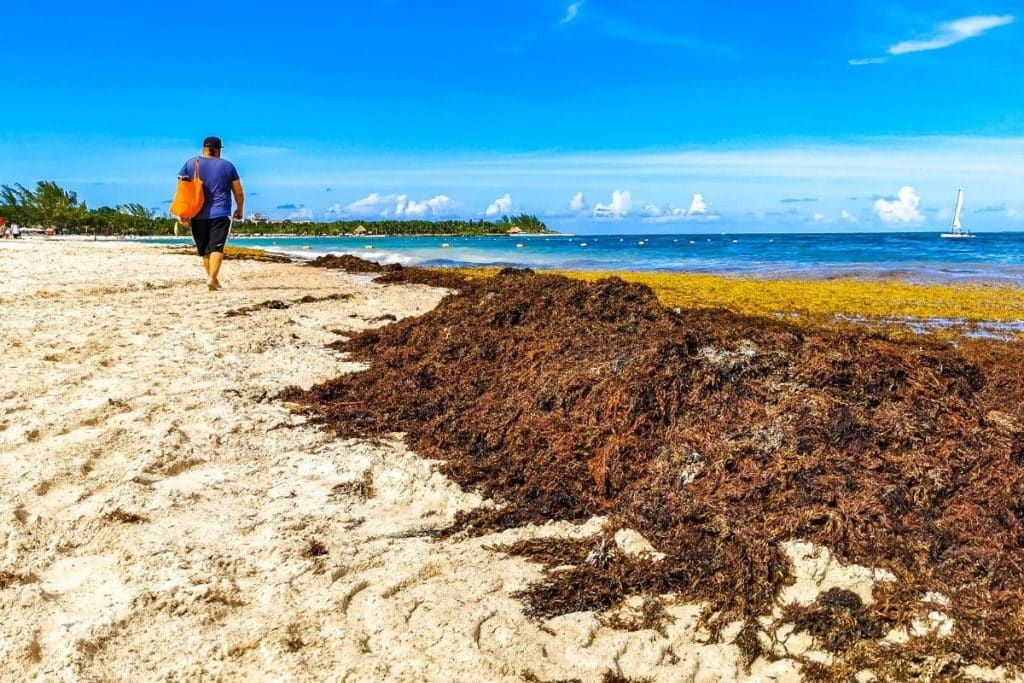Scientists are alerting the public of a record sargassum accumulation in the remote Central Atlantic, close to the Caribbean Sea’s oceanic border, driven by unpredictable winds, currents, and storms.
This week, researchers from the University of South Florida reported that the amount of prickly pelagic fauna measured in December—roughly 5 million metric tons—was significantly more than the amount recorded at the same time last year, which was about 1 million metric tons.
“Although we predicted an increase in the November bulletin, the magnitude of this growth is notable, with the December 2023 abundance representing a historical record,” USF researchers informed.
This year’s announcement is similar to the one made the year before, when the Great Atlantic Sargassum Belt reached unprecedented heights in the first few months of 2023 and there was widespread media coverage of a possible coastal onslaught in Florida during the busiest travel months of the summer.
The macroalgae eventually failed to reach the record high of 22 million metric tons in 2022, falling precipitously by 15% in May – a decrease never seen since tracking started in 2011 and a sign of the unpredictable nature and ignorance of the workings of the seafaring biomass.
However, Chuanmin Hu, a professor of oceanography at USF, said that the December tonnage “indicates that 2024 will be another major sargassum year.”
At the moment, the majority of sargassum is still found 500 miles east of the Caribbean Sea. However, in mid-December, a significant bloom appeared near the mouth of the Orinoco River in Venezuela. According to USF, the bloom then moved northeast to Trinidad and Tobago.
Photo reports from seaweed season in 2023
Florida seaweed season photos (Source: FB Group Sargassum Seaweed Florida: Daily Updates and Photo Reports)
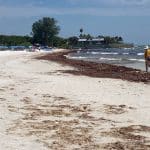
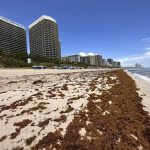
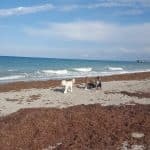



What is sargassum seaweed and what’s causing it?
Sargassum is a type of seaweed that floats on the ocean’s surface, characterized by its brown color and air-filled pockets. This seaweed is vital for marine ecosystems but can impact tourism and coastal environments when it accumulates on beaches.
The recent, unusually large bloom of Sargassum may be influenced by factors like human waste, climate change, and agricultural runoff. Increased nitrogen levels from these sources and varying ocean temperatures are likely contributing to its rapid growth. Changes in weather patterns, ocean currents, and nutrient supply from sources like the Sahara Desert’s dust are also considered influential.

